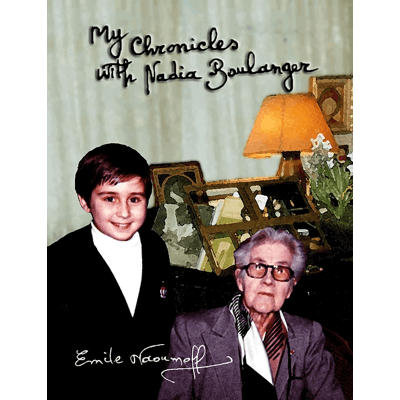 PODCAST: Join Jenna Orkin, Maria Nockin, John Daleiden, Gerald Fenech, Julian Jacobson, Patrick Maxwell, Giuseppe Pennisi and Mike Wheeler for a fascinating fifty-minute audio only programme.
PODCAST: Join Jenna Orkin, Maria Nockin, John Daleiden, Gerald Fenech, Julian Jacobson, Patrick Maxwell, Giuseppe Pennisi and Mike Wheeler for a fascinating fifty-minute audio only programme.
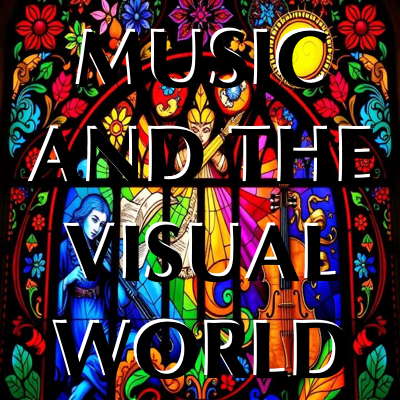 DISCUSSION: John Dante Prevedini leads a discussion about Music and the Visual World, including contributions from Celia Craig, Halida Dinova and Yekaterina Lebedeva.
DISCUSSION: John Dante Prevedini leads a discussion about Music and the Visual World, including contributions from Celia Craig, Halida Dinova and Yekaterina Lebedeva.
 DISCUSSION: What is a work? John Dante Prevedini leads a discussion about The performing artist as co-creator, including contributions from Halida Dinova, Yekaterina Lebedeva, Béla Hartmann, David Arditti and Stephen Francis Vasta.
DISCUSSION: What is a work? John Dante Prevedini leads a discussion about The performing artist as co-creator, including contributions from Halida Dinova, Yekaterina Lebedeva, Béla Hartmann, David Arditti and Stephen Francis Vasta.
Until Dawn

ONA JARMALAVIČIŪTĖ talks to Austrian composer, violinist and lecturer Thomas Wally
The portrait CD Jusqu'à l'aurore comes from Thomas Wally - contemporary Austrian composer, violinist (for example as a substitute in the Vienna Philharmonic Orchestra and Vienna Opera Orchestra) and lecturer at the University of Music and Performing Arts Vienna. A portrait recording was one of his long-term professional goals - he views it almost as a business card of a composer, which allows us to take a listen and get to know him as well as his sound and compositional work. The recording celebrates a decade of Wally's musical creativity and a long close collaboration with the Mondrian Ensemble, with which the composer shared the trust to record his pieces. Here the musician elaborates on the concept of his CD, a retrospective of his compositions, and the long story of making his dream come to fruition.
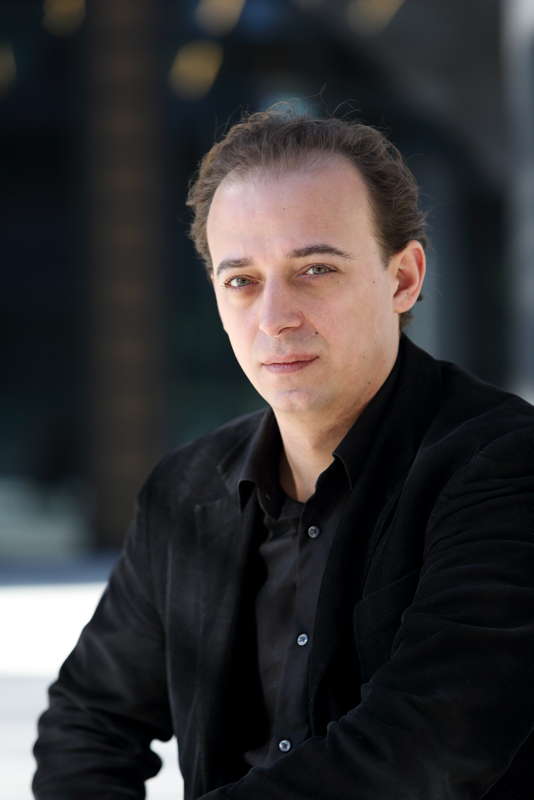
Thomas Wally. Photo © 2015 Maria Frodl
Ona Jarmalavičiūtė: The CD was recorded a year ago. How was the idea born?
Thomas Wally: When I was a student nearly twenty years ago, I used to go to a record shop and look at the records of other composers, thinking about what these composers' lives would be like. Since then I wanted to have a portrait CD with my music. These days there aren't that many music labels concentrating on contemporary music; the record business itself has gone through a fundamental change. I contacted the label Col Legno several times, asking whether they would be interested in such a CD. When the label said yes and the ensemble said yes, I had to make it happen. The whole project accompanied me for more than a year, since I was responsible for it. And it took a lot of effort - fundraising, organizing and supervising the recording sessions, dates, plane tickets, accommodation, deciding which pieces and which takes to keep on the CD, writing the text for the booklet. I did a lot of things for the first time in my life. All in all, it was a really interesting experience!
OJ: Are you satisfied with the result, since you were seeking perfection?
TW: I am actually very satisfied. I am usually very exact with my work when I am in the process of composing or working, but when it is finished, I feel quite relaxed, feeling that I did my best. So I really like the album. I think it also looks beautiful - I like its optical style and elegance.
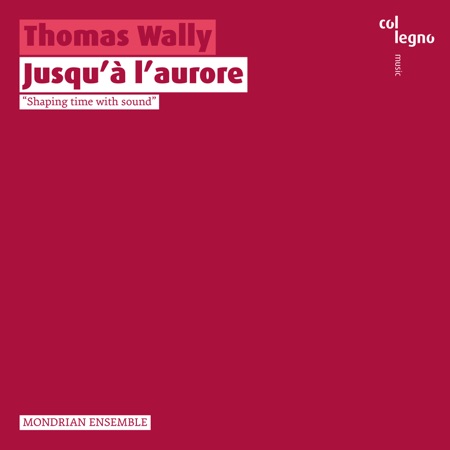
Jusqu'à l'aurore CD cover
The title of the CD is also part of the title of one of the two recorded piano quartets. This quartet is a very special piece, marking the beginning of my collaboration with the Mondrian Ensemble. It actually alludes to a film, named From Dusk till Dawn, directed by Robert Rodriguez and written by Quentin Tarantino. I was inspired by the genre twist; it is a road movie in the first half and a vampire movie in the second half. And I also used a twist in the quartet. The title of the CD and of the quartet is also inspired by the night time itself. So many beautiful things happen at night - the night can be a symbol of freedom, celebration, joy, love. For me, this CD also symbolizes these ideas.
OJ: Where did you look for help or inspiration while making the recording?
TW: I asked people for advice about several things where I had no experience - fundraising for example. I received some good advice. The label itself really helped and, since they have a tradition of a First Listener's Note, I approached composer Dieter Ammann, who wrote it. Actually I haven't met Dieter Ammann in person yet, but I chose him since I knew that he liked my music and that he had collaborated with the Mondrian Ensemble himself. And, of course, he writes really good texts.
OJ: How did your long lasting collaboration with the Mondrian Ensemble come into place?
TW: Years ago two musicians from the Mondrian Ensemble lived in Vienna - violinist Ivana Pristašová and viola player Petra Ackermann. I got to know them through the contemporary music scene and we played together a lot. Ivana Pristašová introduced me to several ensembles and this was really helpful for my career. Together we played in projects in Vienna and also in Paris, and she also performed my pieces. Caprice, the first piece on the recording, was actually premiered by Ivana Pristašová, Petra Ackermann and Roland Schueler in 2009.
Listen — Thomas Wally: Caprice
(WWE 1CD 20448 track 1, 0:00-1:00) © col legno :
Later on they both moved to Switzerland and became musicians in the Mondrian Ensemble. In 2011 I asked them if they would be interested in premiering a piece and a year later I composed the piano quartet ... jusqu'à l'aurore ...: Caprice (IV) bleu for them.
Listen — Thomas Wally: ... jusqu'à l'aurore ...: Caprice (IV) bleu
(WWE 1CD 20448 track 7, 0:00-0:57) © col legno :
OJ: How did you find their interpretation during the recording? Did you have any specific notes for the players about what you wanted?
TW: They are excellent musicians. When I did have some suggestions, they were about details. And I would say my notation is also pretty exact. We were joking that when somebody would make a mistake, I would have to rewrite the piece.
It also helped immensely that the ensemble members had already been performing some of the pieces for several years; two of the piano quartets from the CD were written for the Mondrian Ensemble. The string trio was written for Ivana Pristašová and Petra Ackermann. The solo piece is written for Ivana Pristašová. So at the time of the recording there weren't any questions left. All of the musicians did a really good job in the recording process and it felt like a luxury to work with them.
OJ: What do you value most in the Mondrian Ensemble and their playing?
TW: They work very well as a 'classic' ensemble, but, at the same time, they all - also - live in the contemporary music world, mastering pieces that were written in the twentieth and 21st centuries - so they're used to new challenges and innovations.
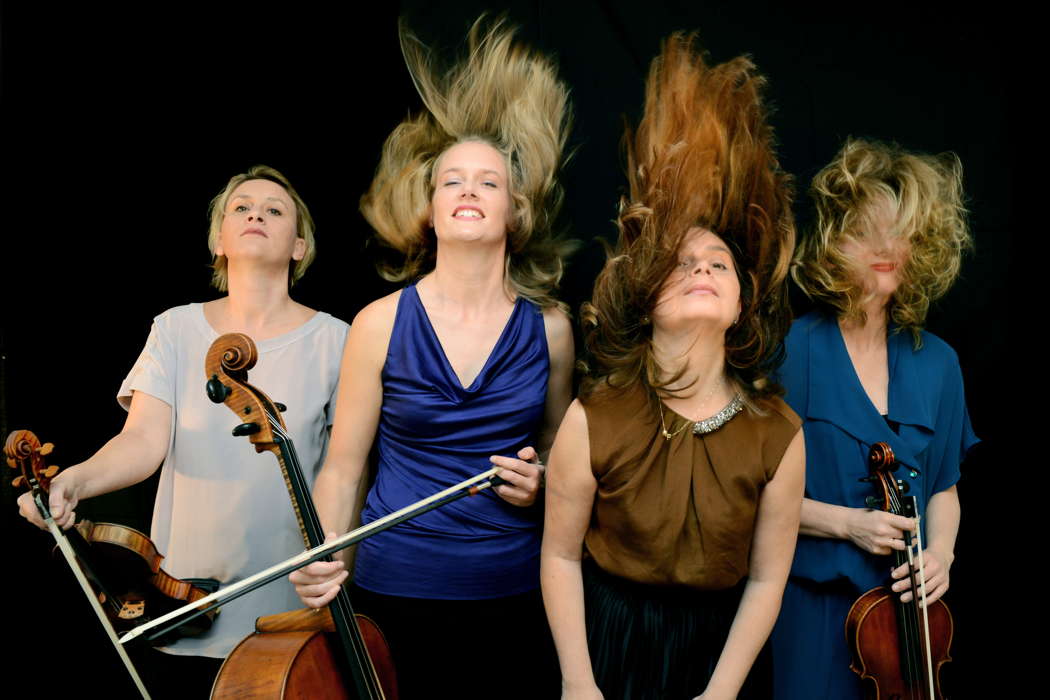
The Mondrian Ensemble, based in Basel, Switzerland. From left to right: Ivana Pristašová, violin, Karolina Öhman, cello, Tamriko Kordzaia, piano and Petra Ackermann, viola. Photo © 2015 Arturo Fuentes
OJ: You also played on one of the recorded tracks, together with the Mondrian Ensemble. What was the experience of recording yourself like?
TW: It was a bit difficult for me, after two days of sitting in the studio, to suddenly take the violin and play to a high level. Even though I am used to playing my own music, it felt like a challenge. At first I thought that it would be possible for me to play, supervise the recording and make notes at the same time. I'm thankful that Ivana had the idea to ask someone else, Julia Purgina, to supervise the recording while I was playing.
OJ: How did you figure out the order of the pieces you wanted on the CD?
TW: I had several ideas of how to put the pieces together. I did not use the transfigurations as one piece, but decided to let the four movements be played between the other pieces. Then there are two Caprices - Caprice number 1 is a very good opener and the first piece I had written for Ivana Pristašová and Petra Ackermann. The last piece is the Postscriptum - the last piece of my piano cycle.
Listen — Thomas Wally: Postscriptum (2 × 11 × 12): The Melancholy of Perfection(ism)
(WWE 1CD 20448 track 9, 0:01-0:58) © col legno :
If you add the instrumentation of string trio from the first piece and the piano solo from the last, you get the instrumentation of a piano quartet. The middle piece is written for violin solo, dividing the CD into two halves. I thought about a lot of different possibilities, but this order really makes sense. In a way, creating the order of the CD felt like composing ... or Sudoku.
OJ: The recording was like a reflection of a decade of your life that encompasses composing and collaboration with the ensemble. What did you see in your latest decade, working on this recording?
TW: I composed the Transfigurations in 2008 and the last quartet in 2019, so it does encompass a long period of time. A lot has happened in these years and each piece evokes certain memories of my life. I know in which situation I wrote the pieces, I know what happened afterwards - compositions can be like a diary. It was a personal revelation for me to write my first caprice in a very free style, using no sketches. Even though there is only one year between the Transfigurations and the Caprice, the latter feels like a new start, and the Transfigurations probably appear like an older composition.
Listen — Thomas Wally: Transfiguration III
(WWE 1CD 20448 track 6, 0:50-1:18) © col legno :
OJ: What do you hope the listeners will take away from the experience of listening of the CD?
TW: It is difficult to say. I remember one musician who was asked about the impact and the message he would like to give to his listeners. He answered that he felt uneasy about messages, since when you give someone a message, you put yourself in a higher position. And instrumental music is really not made to convey messages - it can be a tool to escape and it can take you somewhere you have never been.
OJ: You mentioned that the record industry is changing and that now music is streamed without any CDs. How did you make the decision to create a CD?
TW: I would say that in the first place Jusqu'à l'aurore is not a CD, but a recording. This recording can be played and listened to in many different ways: it can be streamed and downloaded, it can be found on different platforms online and also in shops. I think that a CD is a beautiful thing as an object and it's nice to give it to somebody. It is a great way of presenting yourself as a composer, and also of presenting the Mondrian Ensemble. It is like a digital business card that doesn't expire for a long time.
OJ: What is the meaning behind the virtuosity in your work?
TW: I unfortunately get bored quite quickly when I listen to music - I simply like it when a lot of things are happening; I want a certain amount of information, which either means velocity or different things happening at the same time - or both! Also, as a violinist, I am often confronted with virtuosity, I somehow like this 'sporty' element. So, virtuosity is an idea I like to play with, and, at the same time, call into question musically.
OJ: You mentioned that it was an important experience for you as a composer. What could you say that you have learned through the process?
TW: I really learned a lot, since I dealt with so many things I have never done before. I also learned how to make decisions, because I would have to make certain decisions every day, about whether we use a take or not, do we 'manipulate' it with sound engineering or not, etc. I also learned what a perfectionist I can be. I remember when I started to hear noises on the recording - small noises like breathing or tapping: I decided that I wanted to get rid of them! I feel now that no one listening to the CD would even notice those little noises.
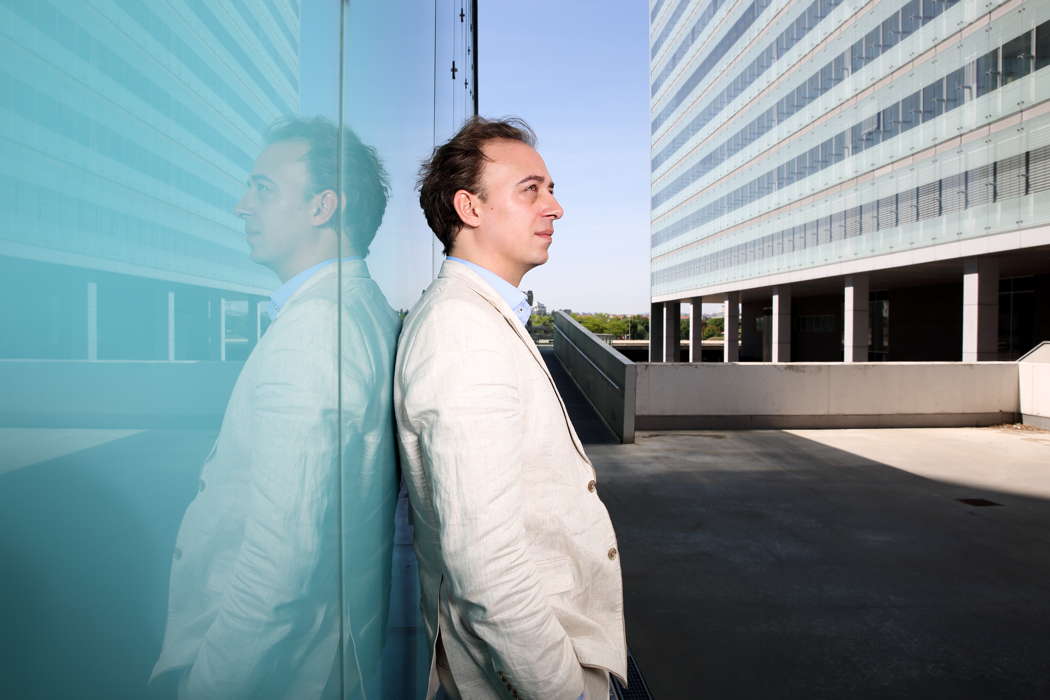
Thomas Wally. Photo © 2015 Maria Frodl
OJ: This autumn there will be a presentation concert. What can you tell us about it?
TW: In the autumn at the Wien Modern festival there is a concert planned where the CD will be presented. This will be the official presentation of the CD. In this concert also, music by Martin Jaggi, one of the founders of the Mondrian Ensemble, will be heard. I am very much looking forward to this event!
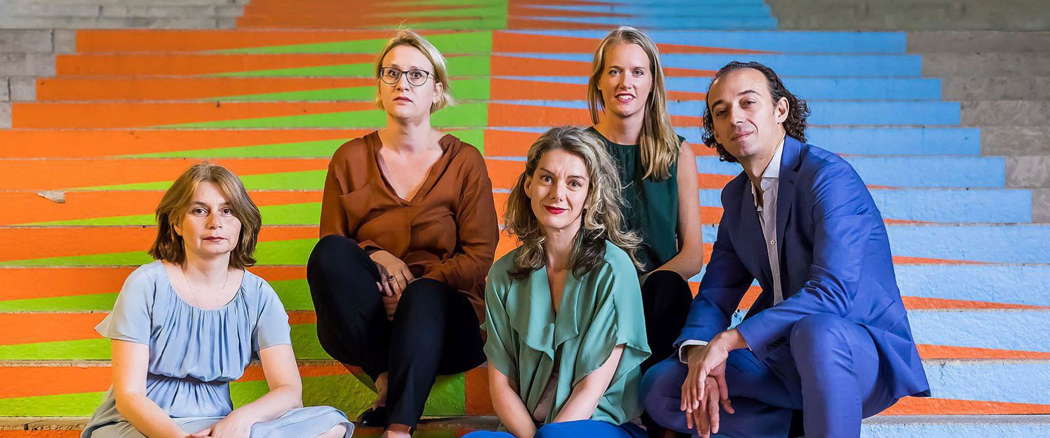
The Mondrian Ensemble and Thomas Wally. Photo © Markus Sepperer
OJ: Thank you for the conversation!
Copyright © 17 October 2020
Ona Jarmalavičiūtė,
London UK

FURTHER INFORMATION ABOUT THOMAS WALLY
FURTHER INTERVIEWS, PROFILES AND TRIBUTES


